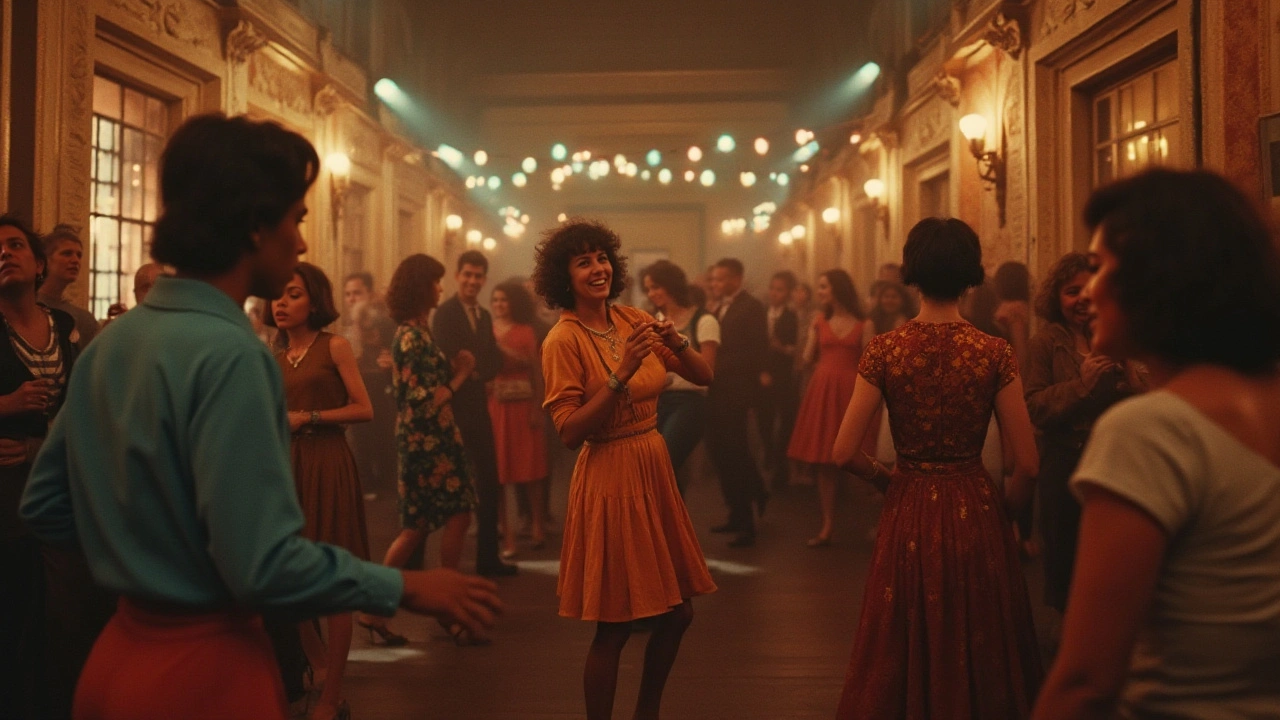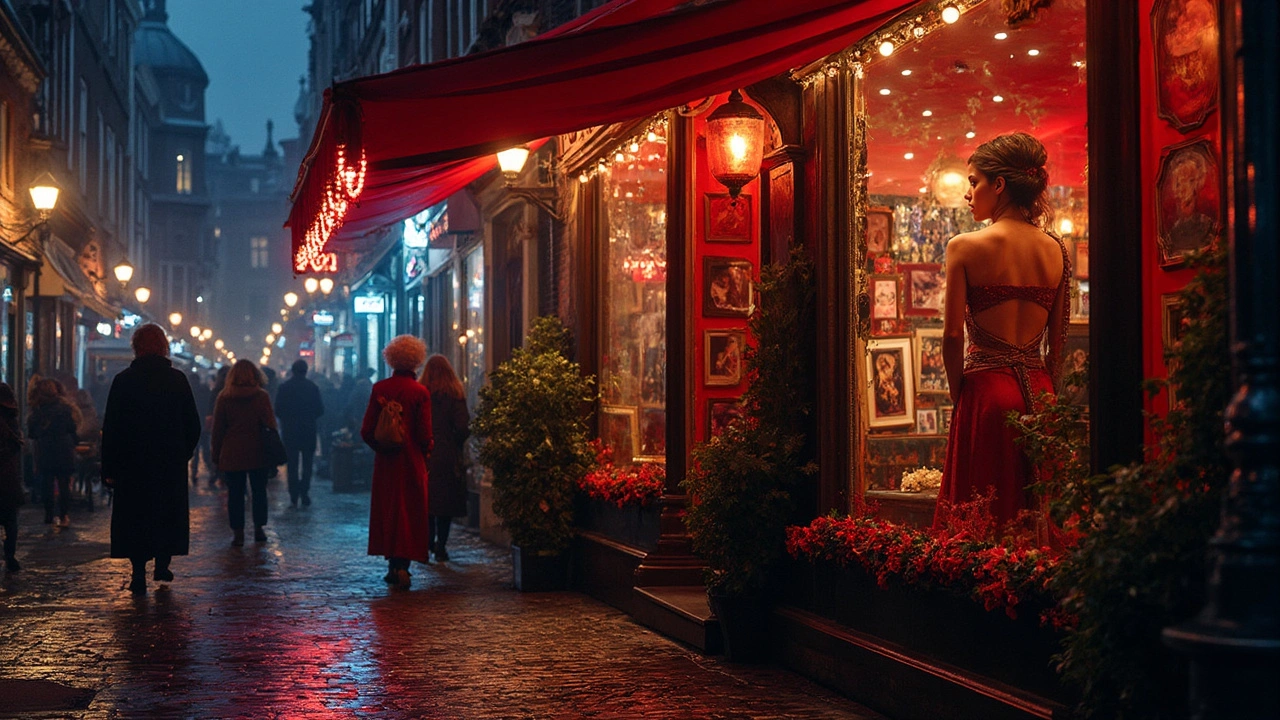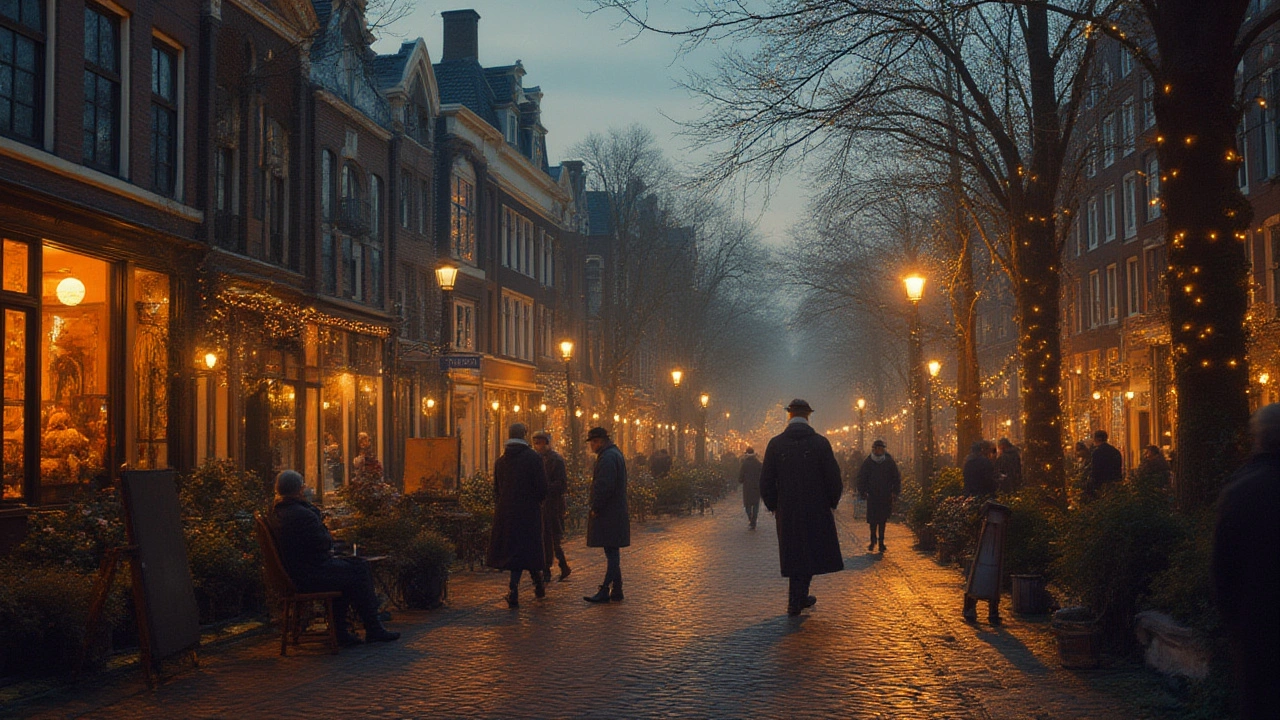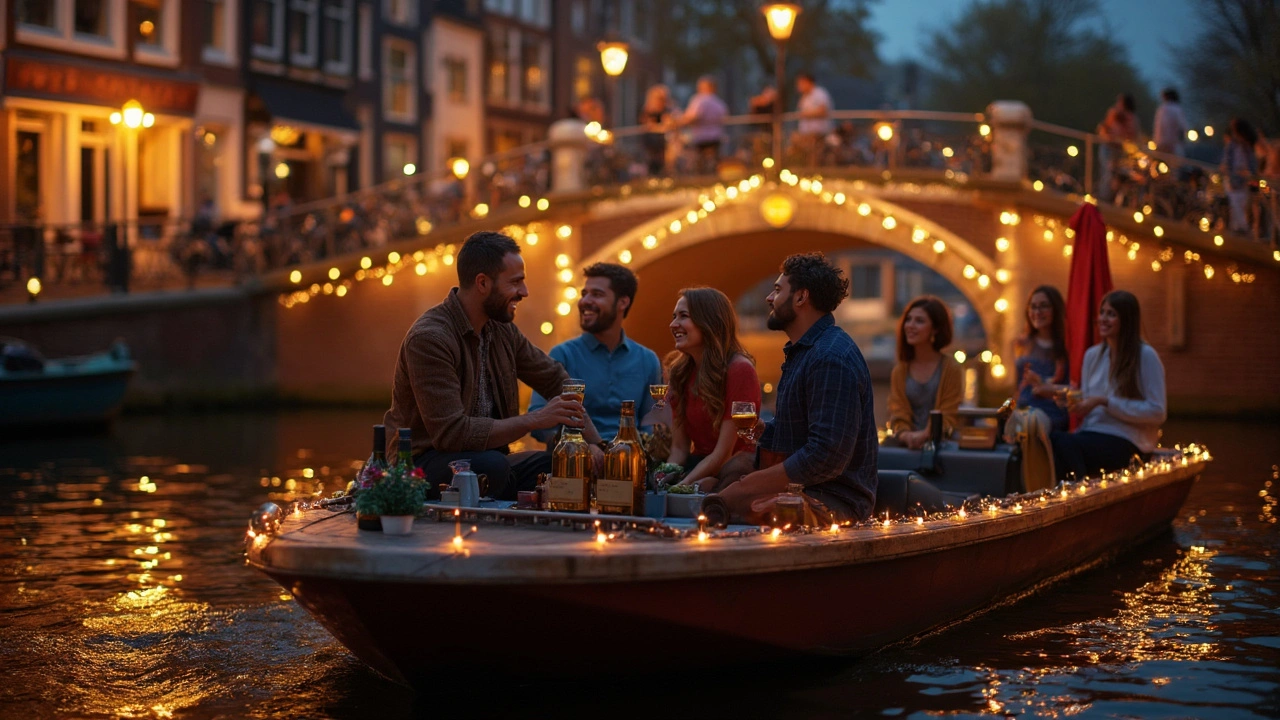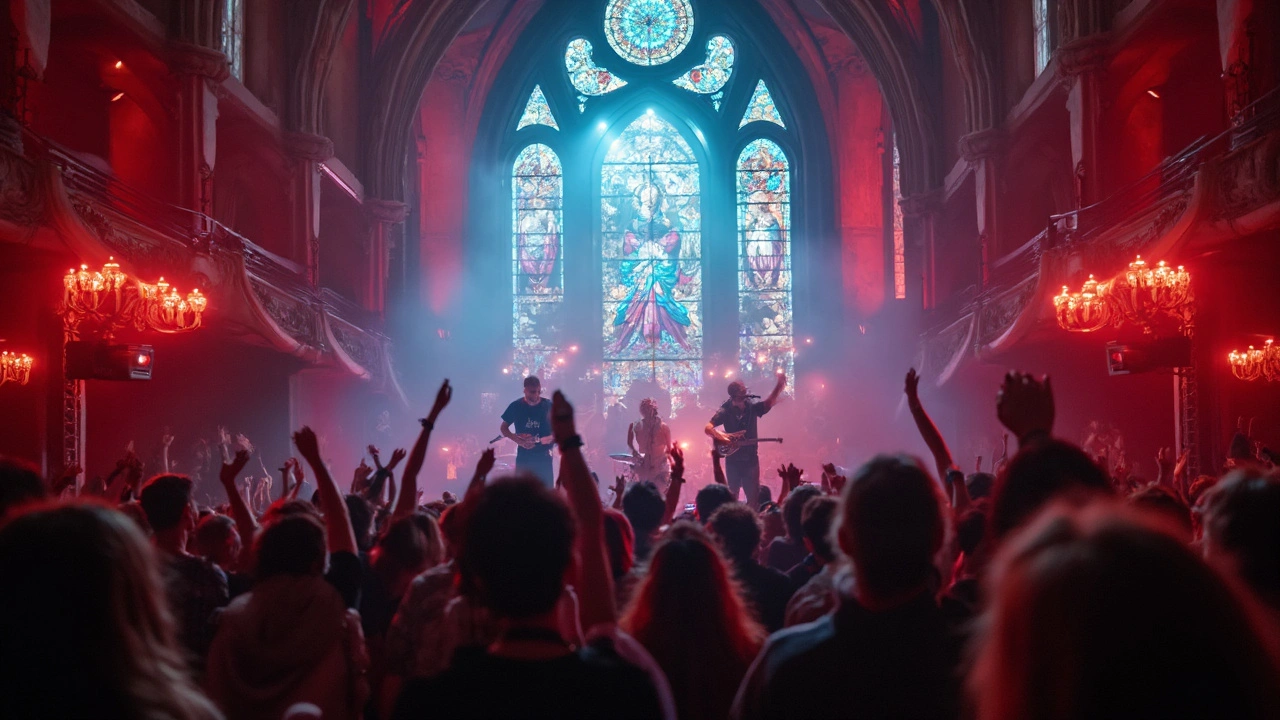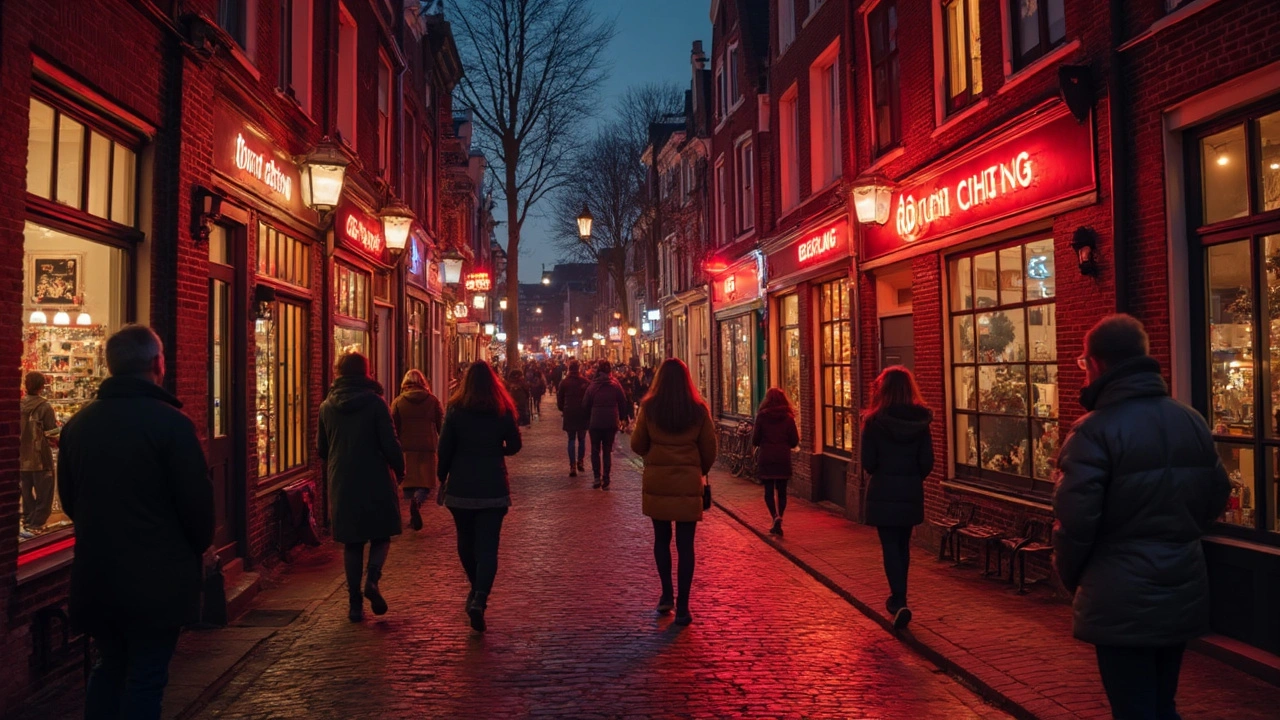
If you say you’re visiting Amsterdam and don’t mention the Red Light District, people will probably give you that look. For a lot of tourists, De Wallen is either at the top of the list, or gets written off as a wild, weird sideshow. Maybe both. The place is famous for its neon-lit windows and wild nightlife, but there’s more going on than what you see in the movies.
First tip: don’t just wander in without a clue. The Red Light District isn’t just one street – it’s a tight cluster of alleys and canals right in the city center, with Oudezijds Voorburgwal and Oudezijds Achterburgwal as the main routes. These spots get packed, especially on weekends and festivals like King’s Day, so don’t expect a quiet stroll. And yes, you’ll find more than just red lights. There are quirky museums (the Erotic Museum is surprisingly chill), cozy brown cafés, and even cheese shops tucked between adult stores.
Cameras are a no-go. Everyone will tell you, but people still mess this up. Don’t photograph anyone in the windows, or security will give you a serious reminder. Instead, grab a beer at one of the old-school bars, or check out nearby Chinatown for some dim sum if the crowds get too much. The best way to get to the district is by foot or bike – don’t bother with cabs or Ubers; you’ll just get stuck in traffic and miss the vibe.
- First Impressions: What Hit Me in De Wallen
- What’s Different About Amsterdam’s Red Light District
- Local Rules, Tourist Mistakes, and Staying Safe
- The Good, The Weird, and The Overrated
- Would I Go Back? My Straight Answer
First Impressions: What Hit Me in De Wallen
The second you turn the corner into De Wallen, the vibe totally shifts. Neon lights, narrow brick lanes, crowds from everywhere—this is a busy heart of Amsterdam Red Light District activity. There’s no other spot like it in the city. On my first trip, the thing that hit me most was just how open and upfront everything was. You see the famous glass windows, each with a red light glowing above, and actual people—mostly women—standing there, working. It’s matter-of-fact, not trashy or creepy, just what they do. Locals walk by like it’s nothing. For tourists, the first minute is pure curiosity.
What also stands out is the mix. In one block, you’ll get a French fry joint (Vlaams Friteshuis Vleminckx is close by and their fries are legendary), a smart shop selling magic truffles, coffee shops, and a medieval church—Oude Kerk, Amsterdam’s oldest—right in the center of it all. You really feel that blend of old and new.
| Red Light District by The Numbers (2024 estimate) | Data |
|---|---|
| Area size (sq km) | Approx. 1 km² |
| Number of window brothels | ~280 |
| Daily visitors (peak season) | ~40,000 |
| % of tourists to Amsterdam who visit De Wallen | Over 60% |
The smell of weed isn’t overwhelming, but it’s always there. Street performers show up on Fridays and Saturdays. Beware: pickpockets blend right into the crowds, especially near the bridges or where people stop to gawk at the windows. If you’re interested in the culture behind all this, guided “Red Light Secrets” tours go past some of the more famous window lanes and even the Red Light Secrets Museum, which digs into the legal and human side of sex work here.
Don’t expect the wild party vibe you see in bachelor party movies at every turn. During the day, the crowds are mixed—older couples, families, groups of friends, and plenty of solo tourists with selfie sticks. At night, things get rowdier but not really dangerous if you stick to the main streets.
- If you feel awkward at first, that’s normal. Everybody looks around a bit too much on their first walk.
- Don’t carry open drinks—Dutch police sometimes check, and the cops move through the crowds in pairs.
- If you want to dip into a coffeeshop, check out Bulldog or Coffeeshop Bluebird—both are well known and feel safe for first-timers.
- Street food can be a lifesaver after a pub crawl—try Febo for classic Dutch croquettes, served right out of a vending wall.
What’s Different About Amsterdam’s Red Light District
This isn’t the only red light zone in the world, but Amsterdam Red Light District—called De Wallen locally—feels totally different from those sketchy backstreet spots in other cities. Here, the vibe is almost casual. It sits right in the middle of Amsterdam’s historic heart, next to the oldest church (Oude Kerk) and canals lined with bikes. You’ll find tourists, locals grabbing fries at FEBO, sex workers in glass-fronted windows, and even families taking canal tours. It sounds chaotic, but it works.
One stand-out thing: sex work here is legal and regulated. Workers rent windows, pay taxes, and get regular health checks. This gives the area a weird sense of safety for everyone—seriously, you’ll see police patrols, security cameras, and visible rules posted everywhere. The vibe feels nothing like the illegal red light scenes you hear about in other places.
Another key difference is just how much is packed into a small space. Within a few blocks, you get:
- Dozens of red-lit windows, each run independently
- Coffee shops (that means legal weed, not just coffee)
- Museums like Red Light Secrets and Museum of Prostitution
- Live sex theaters and peep shows (Casa Rosso is the famous one)
- Quirky shops, snack bars, tattoo parlors, cheesy souvenir stores
- Places like Bulldog, one of the first ever coffee shops in Amsterdam
- Historic buildings—some date back to the 14th century
Talking numbers, De Wallen has about 300 windows for sex workers and gets over three million visitors a year, making it one of the busiest attractions in the Netherlands. It’s so central that you can walk five minutes from Centraal Station and be right in the thick of it.
| Feature | De Wallen (Amsterdam) | Red Light Zones Elsewhere |
|---|---|---|
| Legal Status | Fully legal, regulated | Usually illegal or gray area |
| Safety | Police presence, health checks | Often sketchy, less safe |
| Tourists per Year | 3+ million | Much lower |
| Main Attractions | Sex work, museums, coffeeshops | Mainly sex work |
No matter what brings you here, you’ll see that Amsterdam’s red light scene isn’t hidden away or secretive. It’s right out in the open and, honestly, feels as much like a normal night out as anything. If you want a quick snapshot of Dutch open-mindedness, this is probably the strongest example you’ll get anywhere in the city.
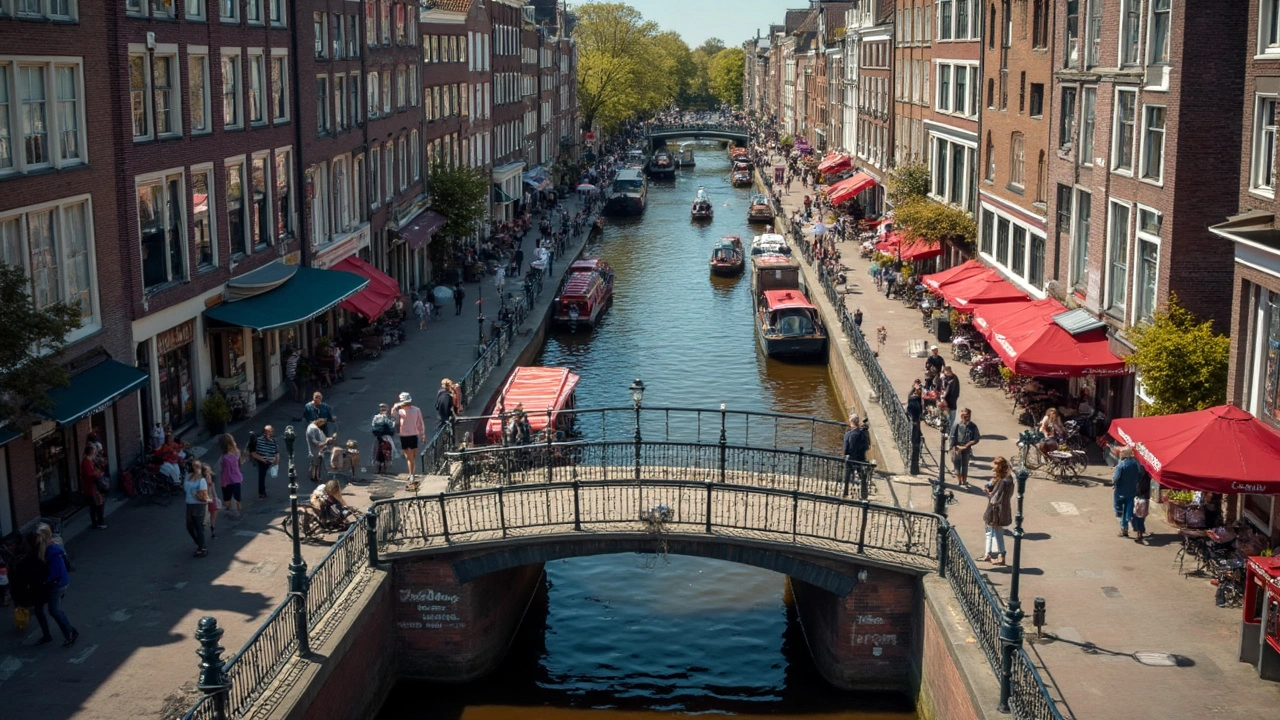
Local Rules, Tourist Mistakes, and Staying Safe
The Amsterdam Red Light District isn’t some free-for-all. There are actual rules, and most are enforced hard—especially if you’re coming from a country where this sort of thing is never out in public. Ignoring the basics puts you on the wrong side of the locals and can even get you in trouble.
Probably the biggest rookie mistake? Taking pictures of the sex workers in the windows. Just don’t. Security or even locals will step in fast if you try. There’s zero tolerance, and it’s honestly just rude. You’ll see the ‘No Photos’ signs everywhere in De Wallen. If you want to grab a selfie, stick to the canals or the general scenery.
Here are some rules and tips you actually need to follow in the district:
- Don’t touch the windows, doors, or knock. Workers will make it clear if they’re open to a chat—otherwise, keep walking.
- Stay off bikes when you’re wandering the main stretches at night. It’s way too crowded. Park it somewhere legit (there are racks everywhere), or risk paying a fine.
- If you want to visit a coffeeshop (yes, the ones that sell weed), follow the age limit: you’ve got to be 18 or over. Don’t bring your own booze inside, and don’t try to take coffeeshop stuff out of the country. Customs can be strict at Schiphol Airport.
- The red-lit windows close at 3 a.m. on weekends, but things quiet down earlier on weeknights. Police regularly sweep the street for anyone getting rowdy or breaking curfew.
- The working girls set their own prices and rules. Haggling is not cool. Don’t be that tourist.
- Drugs other than cannabis are illegal. If someone offers you “magic mushrooms” or “happy pills” on the street, skip it. Most street sellers are either scammers or selling fake stuff.
The city keeps the Red Light District safer than it looks on Instagram. You’ll see police on bikes, plainclothes security, and lots of surveillance cameras. Still, pickpockets do target tourists, especially at night.
Here’s a quick look at some numbers and facts that might save you hassle:
| Red Light District Tip | Why It Matters |
|---|---|
| No photography of windows | Instant confrontation; some say fines up to €100 |
| Biking not allowed after 9 p.m. on main streets | City ordinance, small fines sometimes given |
| Most petty thefts happen after midnight | Watch your pockets, especially in bars |
| Window workers rent by the hour | Be respectful—this is their workplace |
| Coffeeshop hours: 7 a.m. to 1 a.m. on weekends | Outside these hours, fines for loitering |
A little common sense goes a long way. Stick to the rules, watch your stuff, and treat people right. That’ll get you through De Wallen with just the wild stories and none of the headaches.
The Good, The Weird, and The Overrated
Let’s break it down: not everything in the Amsterdam Red Light District is wild parties and Instagram moments. Some stuff is awesome, some is straight-up strange, and yeah—some things get way more hype than they deserve.
The Good: Honestly, the area is way safer and cleaner than most people expect. The streets are always busy, especially in the early evenings. Police patrols, security cameras, and even local volunteers make sure things don’t get out of hand. You’ll see folks from just about everywhere—Brits on bachelor parties, couples on date night, older locals out for a stroll. The real gem is the atmosphere: everything’s open, but respectful. Workers set their own rules. If you’re just curious, head into TonTon Club (an arcade bar near one of the canals) or grab a stroopwafel from a street vendor. For museums, the Red Light Secrets Museum gives a legit peek behind the curtains—absolutely worth it if you want to understand the history, not just the spectacle.
The Weird: There’s stuff here you won’t see anywhere else. Animatronic cats in lingerie shop windows, glow-in-the-dark condoms at the Condomerie, and full-on peep shows that seem straight out of the ‘80s. Walk past the Hash, Marijuana & Hemp Museum and you’ll get a whiff of what Amsterdam’s weed scene is about. But the most unexpected part? The medieval Oude Kerk (Old Church) smack in the middle of all the red lights. It feels wild to step out of a neon alley straight into a centuries-old church for an art exhibition or organ concert.
The Overrated: Nighttime canal boat tours that promise a “wild” view of the Red Light District are usually just slow and crowded, barely skimming the action. The ‘famous’ Bulldog coffee shops get packed with noisy tourists, but there are way better, quieter places to chill outside the main strip. Sex shows drag in the big crowds, but often feel a bit forced and overpriced. If you’re mostly after people-watching, bring some patience—weekends get insanely busy and you’ll spend half your time dodging selfie sticks and stag parties.
| Fact | Details |
|---|---|
| Number of Windows | About 300 active windows for sex workers as of early 2025 |
| Average Visitors | Roughly 35,000 per day, peaking on Fridays and Saturdays |
| Police Patrol Frequency | 24/7 visible presence, with increased patrols from 8PM to 2AM |
| Main Attractions | Red Light Secrets Museum, Oude Kerk, Condomerie, Hash Museum |
| Camera Fines | Up to €95 for taking prohibited photos of workers |
Here’s a pro tip: if you want to see the area without the crush of tourists, go in the late morning or early afternoon. You’ll actually notice the old architecture, the locals doing errands, and street art you’d miss at night. Still, if all you want are wild stories, come after sunset and brace yourself. Just know that Amsterdam’s Red Light District is way more layered—and way less predictable—than you’d guess from the travel guides.
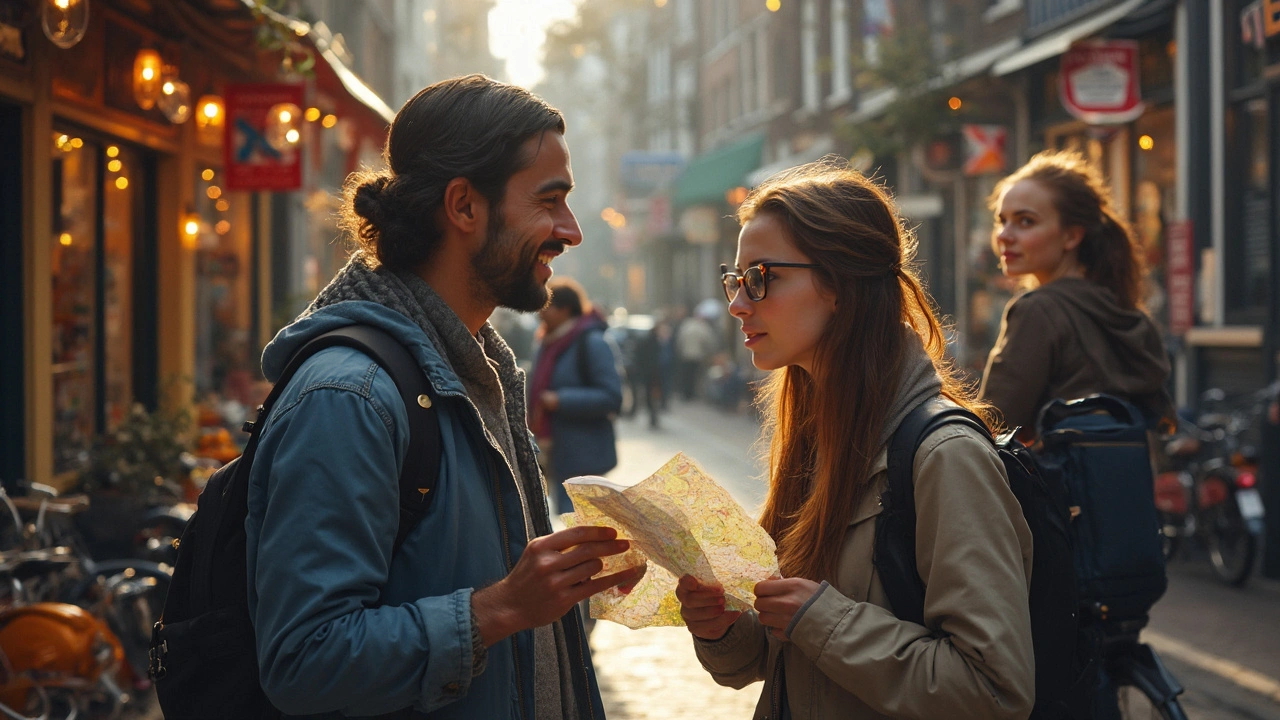
Would I Go Back? My Straight Answer
So, after all the hype, would I revisit Amsterdam Red Light District? Yeah, but not for the obvious reasons. My first trip felt a bit like stepping onto a movie set—there’s so much to take in that the sensory overload is real. But once that wears off, you start looking past the neon windows.
What draws me back isn’t just the wild side. It’s the people-watching, the mix of cultures, and honestly, the blast of Dutch directness. If you want to see raw Amsterdam, this is the place. As a bonus, restaurants nearby (like Café Remember and Burgerfabriek) are open late—handy when you want to skip tourist traps and grab some real food after wandering.
One thing needs repeating though: it’s not the same as it used to be. Local government’s clamped down on rowdiness. Since the city banned guided tours through window alleys in 2020, you won’t see crowds blocking doorways. Police and city hosts patrol on busy nights, especially Fridays and Saturdays, and there are fines (up to €150) for urinating in public, drunken behavior, or ignoring the no-photo rule.
| Fact | Detail |
|---|---|
| Operating hours | Most windows open from 11 a.m. until 3 a.m. (Fridays/Saturdays) |
| Security presence | City hosts and police out every night |
| Window workers | Around 300 windows, mostly in De Wallen |
| Museums & cafés | Open until midnight or later |
| No-photo fine | €95 fine for taking a photo of workers |
If you’re looking for something truly local, go during a weekday afternoon. The pace is more relaxed, you can chat with shop owners, and see the historic side—Oude Kerk (the oldest building in Amsterdam) sits right in the center of De Wallen, and its quiet, medieval architecture is a huge contrast to the crowded canals.
Would I recommend it? For the curious, absolutely, but go with a plan:
- Stick to busy, well-lit streets and avoid window-shopping alone late at night.
- Eat before you go (most sit-down spots fill up fast after 10 p.m.).
- Book a spot at quirky museums (Red Light Secrets is a solid pick for a quick visit).
- If you’re not into the adult scene, the area’s historic cafés make for a great detour. Try 't Mandje, a legendary LGBTQ+ spot, or Café Belgique for craft beer lovers.
Bottom line: I wouldn’t go back every time, but I would swing by if I wanted to show friends the unfiltered Amsterdam vibe, or just to catch that wild mix of chaos and history—all in one spot.

